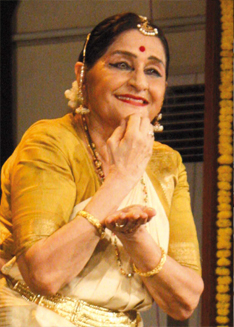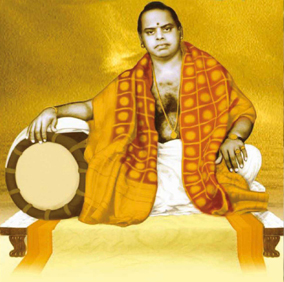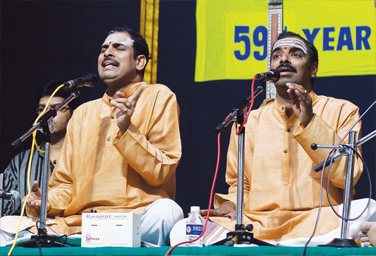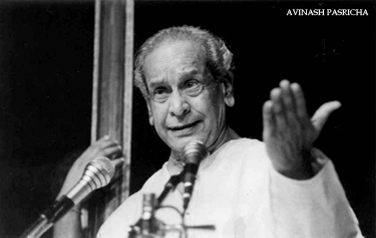Nalanda’s national seminar on Indian Classical Dances by Dr. Kanak Rele

Nalanda Dance Research Centre, Mumbai, is celebrating the silver jubilee of its recognition as a research organisation by the Ministry of Science and Technology. Founded in 1966, it has grown into a three-tiered institution imparting training in classical dances to pre-university students, academic education in the form of Bachelors, Master’s and Ph.D. in Dance degrees of the University of Mumbai at its college of classical dances Nalanda Nritya Kala Mahavidyalaya and post doctoral research. One of its most important wings is the Department for Developing Teaching Methodology in Dance. Nalanda has planned a year-long calendar of events to celebrate this achievement.
The national seminar titled ‘70 years of Indian Classical Dances’, was an important event conducted at Nalanda in Mumbai last year. The idea for the seminar came up during the deliberations of the special committee appointed by the Planning Commission for mid-term assessment of the XI Five Year Plan, of which I was an expert member. All the seven recognised dance styles or traditions acquired their present-day form of presentation during the last 70 years. The process still continues, but not at the frenetic pace of earlier times. Each presentation at the seminar was an invaluable contribution towards the preservation and rejuvenation of India’s priceless heritage.
NACHIARKOVIL RAGHAVA PILLAI (1910 - 1964) - A celebrity tavil vidwan by B.M. Sundaram

The tavil accompanies the nagaswaram in temples during rituals. It led the way in presenting mathematically complex phrases for other percussive instruments to follow. Many greats have done yeoman service to this art
and elevated its status. Needamangalam Meenakshisundaram Pillai (popularly addressed as ‘Tavilkarar’) was numero uno and considered the path-setter in the art. Iluppoor Panchapakesa Pillai, Tirumullaivayil Muthuveer Pillai were his well known contemporaries. Another legendary tavil maestro was Nachiarkovil Raghava Pillai. His ancestors were nattuvanar-s belonging to Nachiarkovil, a small town near Kumbakonam.
Raghava Pillai was born on 8th November 1910 as the son of Pakkiri Nattuvanar and Kannammal. His brothers and sisters – Ramachandra Nattuvanar, Rangaswami Pillai (a vocalist), Kamakshi Ammal, Ammani Ammal, Vanjulavalli Ammal and Nataraja Pillai – were all elder to him. His father wanted to train him in mridanga playing, quite unusual for the family, though young Raghavan showed keen interest only in learning the tavil. After much persuasion, he was entrusted to Tiruvazhaputhur Pasupati Pillai, prime disciple of the famous Ammachatram Kannuswami Pillai, regarded by one and all as the greatest guru peetham in the field of tavil.
Season potpourri - The T’Nagar season by Manna Srinivasan

Yet another Season has come and gone. It was longer and featured many new initiatives. Nalli’s Reckoner for the Chennai Music Season compiled by S. Kannan is getting more and more voluminous.
The mega event is so comprehensive, multi-dimensional, multi-segmented and inter-related; yet each component seems complete.
Hailed as unique, the phenomenon is not isolated or ephemeral, but a continuum. It is a product as well as a process. There is a ‘before’ and an ‘after’.
It inspired imaginative ‘flights’ of many types. Just to illustrate: The violin duo, Ganesh-Kumaresh presented as part of the concert repertoire, an ‘ode to the season’ composed for the occasion, rendering the lyrics vocally first. Neyveli Santhangopalan delighted with an imaginative presentation of the probable discussions in a hypothetical meeting of the Trinity of Tyagaraja, Muthuswami Dikshitar and Syama Sastry.
The juggernaut moves on. There is no fulcrum as such. Any one can join and many do each time. There are also problems aplenty. They get highlighted, the media providing the space and scope. Opinions of all sorts, concerned, constructive, simplistic, for the sake of quick sound bytes, even iconoclastic and allergic, are all taken in good spirit.
PANDIT BHIMSEN JOSHI - A giant departs by V. Ramnarayan

The day we received news of the maestro’s death, a friend, Jayaram, called to share his memories of Bhimsen Joshi with us. He recalled a 1970s concert on the Health League grounds of Hyderabad. He remembered in particular the unforgettable Pooria Dhanasree of that evening that lasted an hour and a half and was primarily responsible for the concert going on well past midnight. Those who were present at that concert, listening spellbound, sprawled on the sands, were transported to another realm that night.
To many of us who had the misfortune not to listen to a live concert by the incomparable Amir Khan, death snatching him away prematurely from us, it was some consolation that we still had Bhimsen Joshi in our midst, followed by Pandit Jasraj who peaked during the years Joshi’s music seemed to plateau.
Bhimsen Joshi was the second member of a mutual admiration society whose other half had been Amir Khan. Legend has it that the Ustad prescribed attendance at no fewer than 25 concerts of Bhimsen Joshi for his disciples before they made bold to perform in public. Joshi himself was a great admirer of Amir Khan and declared that his famed Abhogi composition was a gift from the ustad.


